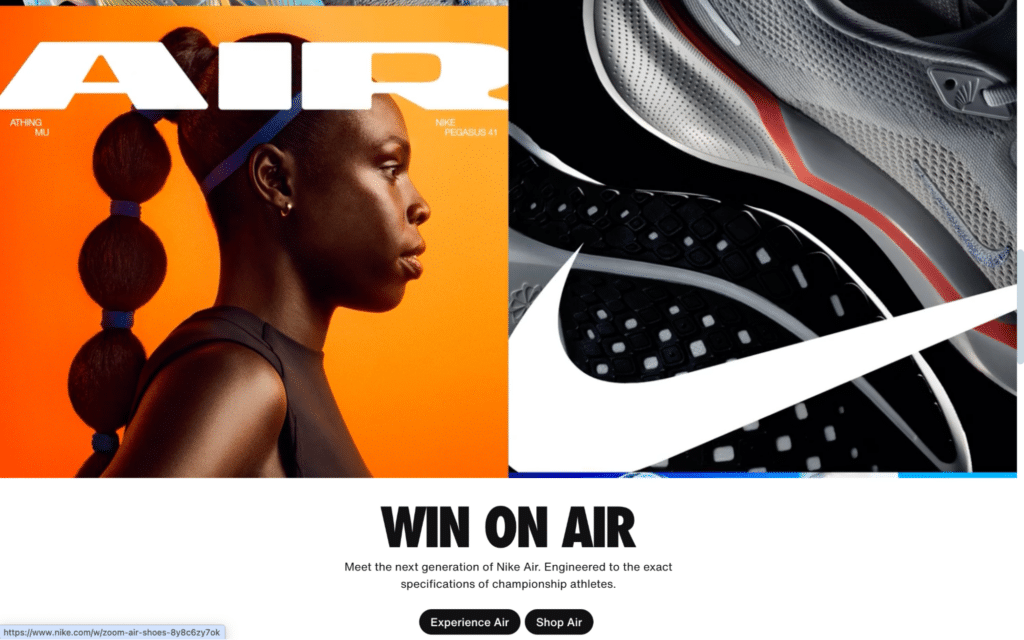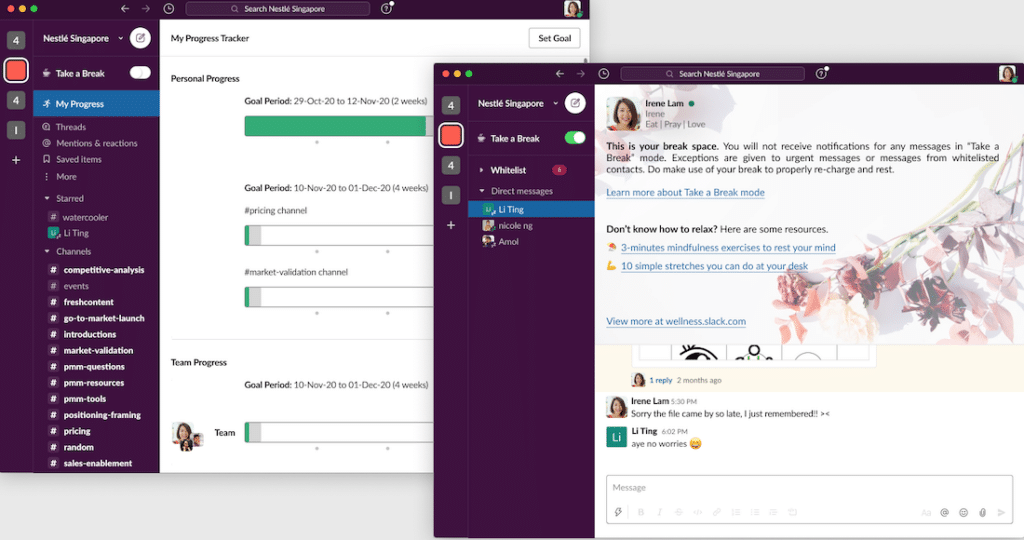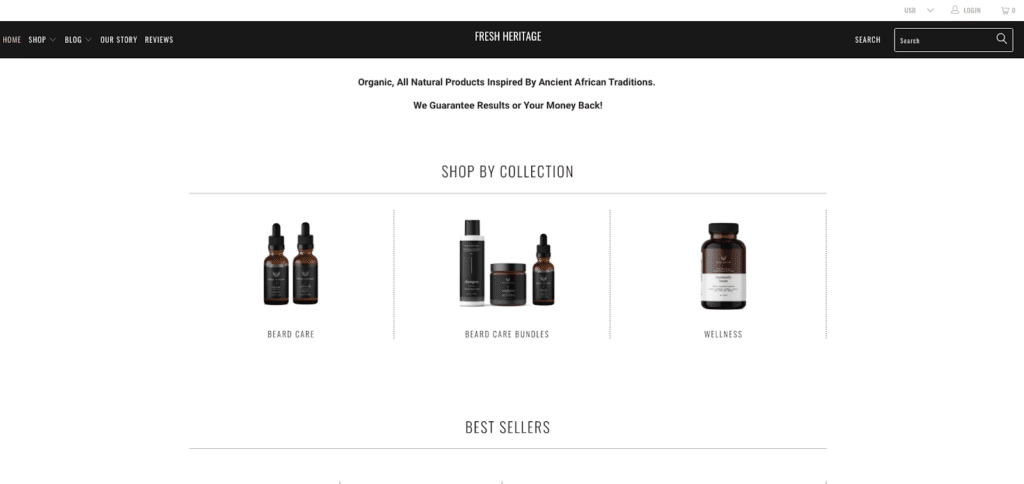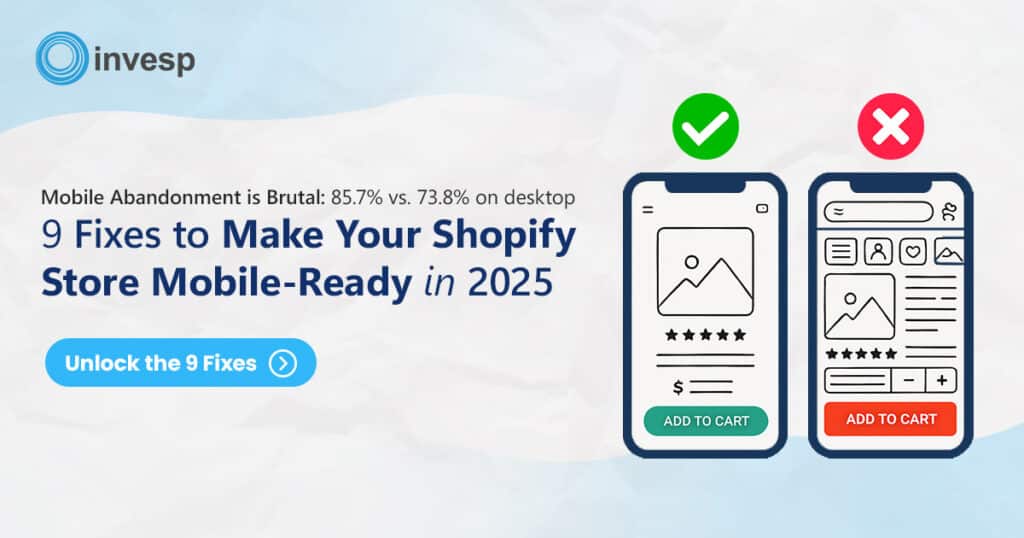Brand design plays a crucial role in shaping how customers perceive your business. While many focus on the technical aspects of Conversion Rate Optimization (CRO), the impact of brand design on CRO is often underestimated.
A strong, cohesive brand design attracts attention and builds trust, guiding users through the customer journey and ultimately influencing their decision to convert.
This article explores how brand design can significantly impact your CRO efforts, creating a seamless and compelling experience that turns visitors into loyal customers. From the visual elements to the emotional connections, we’ll explore why brand design should be at the forefront of your conversion strategy.
Let’s dive into how to use design to turn casual visitors into loyal customers.
What Is Brand Design
Brand design is the visual and emotional representation of your brand’s identity. It encompasses everything from your logo, color schemes, typography, and imagery to the tone and style of your messaging.
Essentially, brand design is the blueprint that guides how your brand is perceived by the public. It creates a cohesive and consistent look and feel that communicates your brand’s values, personality, and promise to your audience.
A well-crafted brand design not only makes your business recognizable but also builds trust and loyalty among customers. It goes beyond just creating a logo; it involves a strategic approach to designing all elements that shape the brand experience. This includes the packaging of your products, the layout of your website, the design of your social media posts, and even the style of your customer service.
The Psychology Behind Brand Design and CRO
Brand design and CRO are an essential part of creating your brand’s online presence and making it successful. They work together to attract, engage, and convert visitors into loyal customers.
Here’s why they matter:
- First Impressions: Your brand’s design is the first thing people see. A good design makes a great first impression and draws people in.
- Emotional Connection: Using color psychology and appropriate fonts and images in your brand design can evoke emotions and connect with your audience on a deeper level.
- Consistency: A consistent design builds recognition and trust. People like knowing what to expect.
Visual Appeal
Let’s face it: appearances matter. People make a significant part of their buying decisions solely based on the appearance of your website.
It’s like dressing for a job interview—you want to look sharp, professional, and like you know what you’re doing.
A visually appealing and professionally made website not only grabs people’s attention but such websites also inspires trust in your audience. After all, no one wants to buy from a shady-looking website.
Want to attain visual success for higher conversion rates? Here are some tips:
- Know your audience. Design with your target customer in mind. What do they like? What speaks to them?
- Be consistent with your branding. Use the same fonts, colors, and imagery throughout your website for a cohesive look.
- Less is more. Avoid clutter. Clean, uncluttered designs are easier on the eyes and improve readability.
- Optimize for mobile devices. More people than ever are using smartphones, so make sure your website looks good on small screens.
- Test consistently. Run A/B tests to experiment with different designs and see what works best for your audience.
Nike is a masterclass in brand design. Its branding and visual identity perfectly reflect the brand’s values—athleticism, energy, and performance.
- High-Quality, Colorful Imagery: The website displays high-resolution, dynamic images of athletes and products, showcasing the quality and performance of Nike gear. The photos are also vibrant and colorful, aligning with Nike’s message of energy and vibrancy.
- Emphasis on Movement: Dynamic visuals and animations create a sense of energy and excitement, reflecting the brand’s core values.
Clear Call-to-Actions: Nike makes it easy for customers to purchase products by providing precise and prominent call-to-action buttons at appropriate moments.

First impressions matter, and visual appeal is often the first thing a visitor notices. So, don’t shy away from investing in professional websites that look great and boost conversion rates.
Beyond visual appeal, a well-designed website is easy to navigate and understand. People are likelier to stick around if they can find what they’re looking for without getting frustrated (more on this later).
Brand Consistency
Brand consistency is like wearing a well-tailored suit—it makes a good impression. People trust you more when your brand looks and feels the same everywhere. They know what to expect, and that makes them feel comfortable.
The statistics support this statement.
Research shows that consistent branding can lead to significant revenue increases. One study found that brand consistency can potentially increase revenue by 10-20%.

Companies like Apple and Coca-Cola are excellent examples of brand consistency done right. You instantly know what to expect no matter where you see their logo or hear their name.
For instance, Coca-Cola’s imagery and products look the same everywhere—including the brand’s iconic red and white color scheme, classic script logo, and distinctive bottle shape.

This consistent visual identity, coupled with upbeat and optimistic advertising campaigns, helps people remember and trust the brand. It also eventually helps you eventually strengthen brand credibility.
Want to leave the same lasting impact on your audience, which can lead to higher conversion rates? Here are some tips to help you achieve brand consistency:
- Define your brand. Know who you are, what you stand for, and who you’re talking to.
- Create a style guide. This document outlines all the rules for your brand, from colors and fonts to tone of voice.
- Be consistent across all touchpoints. This includes your website, social media, email marketing, packaging, and in-store experiences.
- Train your team. Everyone who represents your brand should understand its guidelines.
Pro tip: Maintaining brand consistency is an ongoing process. It’s not something you can just set and forget. Keep an eye on your brand and make adjustments as needed.
User Experience (UX)
Imagine trying to find your way around a new city without a map. It can be frustrating and quickly put you off the idea of exploring the city.
That’s what happens when your website is challenging to navigate. Potential customers come to your website but leave it after they realize it’s hard to navigate or find anything.
On the other hand, a great user experience (UX) is like giving your visitors a clear roadmap to what they want.
A good UX keeps people happy and coming back. When your website is easy to use, people will likely stick around and buy stuff. It’s like having a helpful salesperson who knows precisely what you need. Naturally, it boosts conversion rates, reduces bounce rates, and inspires trust in your audience.
Slack is an excellent example of a simple design making a big difference. Instead of confusing you with lots of buttons and options, Slack keeps it clean and easy.

You can quickly find your teams, messages, and files. It’s like having a tidy workspace where everything has its place. This simple setup makes it a breeze to use, which is why so many people love it for work and staying connected with their colleagues.
Want to follow Slack’s approach to UX design? Here are some quick tips:
- Reduce cognitive load. Refrain from overwhelming users with information. Break down complex tasks into smaller steps. Use clear and concise language.
- Consistency is key. Maintain a consistent look, feel, and behavior throughout your product. Users should feel familiar with your user interface.
- Leverage visual hierarchy—guide users’ eyes by using size, color, and placement to emphasize essential elements.

- Test early, test often. Gather user feedback from real users through user testing and usability testing. You can also use online marketing analytics tools like Google Analytics to gain insights into user engagement, behavior, and preferences. Observe how those users interact with your product and make adjustments accordingly.
- Mobile-first design. More than half of internet users use their phones to shop—make sure you optimize your website for mobile devices for optimal UX.
- Speed matters. Optimize your website or app for fast loading times. Users expect instant gratification.
Pro tip: Don’t overlook people with disabilities, either. Follow accessibility guidelines to create inclusive experiences.
Brand Design And Emotional Connection
Sometimes, people want a product just for the emotional connection they build with it. And it’s not just about the features but how it makes you feel. That’s the magic of brand design.
Take all the luxury shopping people do—Prada bags, Jimmy Choo shoes, Dior dresses, and even iPhones.
People buy based on emotion and brand perception and then justify their decisions with logic. Your brand design is your first impression, and it’s crucial to make a good one.
When you create a solid emotional connection, customers become more than just buyers; they become fans and spread word-of-mouth about your brand.
Here are some tips to tap into the emotional connection and boost your conversion rates using brand design:
- Know your audience inside out. Understand their values, dreams, fears, and what keeps them up at night. For example, if you’re targeting eco-conscious consumers, focus on sustainability and environmental impact in your design.
- Tell a compelling story. Every brand has a story. Make it relatable and inspiring.
- Use emotion-evoking imagery. Pictures speak louder than words. Choose images that evoke specific emotions. For instance, photos of families can be used for a family-oriented brand or adventure seekers can be used for an outdoor brand.
- Personalize the experience. Make customers feel special. Use their names, offer tailored recommendations, or create personalized content. For instance, Amazon’s recommendation engine based on past purchases is a prime example.
As usual, remember to remain consistent with your branding. In the end, it’s about more than just looking good. It’s about making people feel something.
Brand Design And Differentiation
Brand design is also your chance to stand out from countless other brands that probably sell the same products and services as you do.
Differentiation is important because:
- It helps you cut through the noise.
- With a distinct brand image, you have a better chance of attracting and catering to user preferences.
- Your audience is most likely to buy from you if your brand appears special and different—which means higher conversion rates.
So, how will you differentiate your brand to make it stand out in a crowded marketplace?
Start by identifying your unique selling proposition (USP). What sets you apart? Is it your product, service, values, or customer experience?
Fresh Heritage is a great example of a brand that effectively differentiates itself through its unique selling proposition.
Their USP “Organic, All Natural Products Inspired By Ancient African Traditions” helped them carved out a niche in a market dominated by products for white men.

They further back up this USP by showcasing the process behind their products through video, proving that their claims aren’t just empty promises.
Other great way to differentiate yourself is by giving your brand a distinct character. For example, are you fun and playful like Airbnb, or staid and sophisticated like Rolex?
And that’s not all.
Your logo, colors, typography, and imagery—all should reflect your brand personality. For instance, Spotify’s green color and playful design convey its music-centric and energetic vibe.
Conclusion: Design Your Way to Success!
Your brand design is more than just skin deep. By understanding the psychology behind design and implementing effective CRO strategies, you can make your brand values resonate with your audience and drive conversions.
Remember, a strong brand is all about consistency, emotional connection, and differentiation. Gauge user interactions and identify user behavior insights to identify your target audience and ideal website visitors. Once you’ve obtained this information, build your landing pages and overall user journey to directly appeal to your audience.
Continuously test, iterate, and refine your design to ensure it aligns with your evolving business goals.
By investing time and effort and using the right strategies for your brand design, you’ll build a loyal customer base, which will increase your company’s future revenue.



